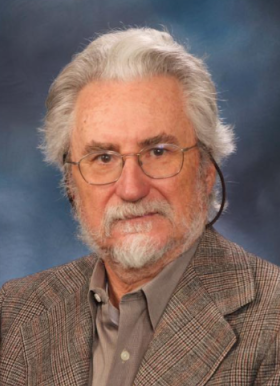
Research Abstract
Work in my laboratory is focused upon the analysis of paleontological evidence for primate and human evolution. I am currently involved in several multidisciplinary paleoanthropological field projects in the American West. Our previous fieldwork in Namibia discovered the first Miocene hominoid ever found in sub-equatorial Africa and one of the most extensive middle Miocene faunas from Africa. I am currently interested in applying GIS and remote sensing techniques to paleoanthropological exploration. I am the Coursemaster of the Human Anatomy & Development course for first year medical students (and Anthropology PhD candidates) at Washington University Medical School.
Selected Publications
- Anemone, RL and Conroy, GC (eds) New Geospatial Approaches to the Anthropological Sciences. Santa Fe, NM: School for Advanced Research Press; Albuquerque: University of New Mexico Press. (2018)
- Conroy, GC, Chew, A., Rose, KD, Bown, TM, Anemone, RL, Gunnell, GF. (2018) Assessing Unsupervised Image Classification as an Aid in Paleoanthropological Explorations. In: Anemone, RL and Conroy, GC (eds) New Geospatial Approaches to the Anthropological Sciences. Santa Fe, NM: School for Advanced Research Press; Albuquerque: University of New Mexico Press. pp, 59-79.
- Anemone, RL and Conroy, GC. (2018) Geospatial Anthropology: Integrating Remote Sensing and Geographic Information Sciences into Anthropological Fieldwork and Analysis. In: Anemone, RL and Conroy, GC (eds) New Geospatial Approaches to the Anthropological Sciences. Santa Fe, NM: School for Advanced Research Press; Albuquerque: University of New Mexico Press. pp. 1-20
- Conroy, GC. (2014) Walking back the cat: Unsupervised classification as an aid in “remote” fossil prospecting. Evol. Anthropol. 23: 172-176.
- Conroy, GC, Emerson, C., Anemone, R., Townsend, K. (2012) Let your fingers do the walking: a simple spectral signature model for “remote” fossil prospecting. J. Hum. Evol. 63:79-84.
- Anemone, R., Emerson, C. Conroy, G. (2011) Finding Fossils in New Ways: An Artificial Neural Network Approach to Predicting the Location of Productive Fossil Localities. Evol. Anthropol. 20:169-180.
- Anemone, R., Conroy, GC, Emerson (2011) GIS and Paleoanthropology: Incorporating New Approaches from the Geospatial Sciences in the Analysis of Primate and Human Evolution. Yrbk. Phys. Anthropol. 54:19-46.
- Conroy GC, Anemone RL, Van Regenmorter J, Addison A (2008) Google earth, GIS, and the great divide: a new and simple method for sharing paleontological data. J. Hum. Evol. 55:751-755.
- Conroy GC and Smith RJ (2007) The size of scalable brain components in the human evolutionary lineage: with a comment on the paradox of Homo floresiensis. Homo 58:1-12.
- Conroy GC (2006) Creating, analyzing, and querying paleoanthropological maps using GIS: an example from the Uinta Basin Utah. Evol. Anthropol. 15:217-223.
- Conroy GC and Pontzer H (2012) Reconstructing Human Origins (3rd ed.). W.W. Norton and Co., NY, 732p.
- Conroy GC (1990) Primate Evolution. W.W. Norton and Co., NY, 492p.
For a complete list of Dr. Conroy’s publications, click here.
Other Information
Education
1970 BA (Honors), Anthropology, University of California, Berkeley
1972 MPhil, Biol. Anthropology, Yale University, New Haven, CT
1974 PhD, Biol. Anthropology Yale University, New Haven, CT
Selected Honors
1980 National Academy of Science – Czechoslovakian Academy of Science Exchange
1986-1987 Fulbright Senior Research Fellow, Africa Program
1993-1996 Master, Lowry-Moore Society
1998 NSF Study Panel (Division of Information and Intelligent Systems)
2001 Samuel R. Goldstein Leadership Award in Medical Education
2003 Austrian Decoration of Honor for Science and Art, First Class
2003 Elected Fellow, Academy of Sciences (St. Louis)
2004 Official Nominator for the MacArthur Foundation Fellows Program
2014 Senior Class Award, Preclinical Teacher of the Year
2015 Alumni Association Distinguished Service honoree
2017 2nd Century Award, Washington University School of Medicine